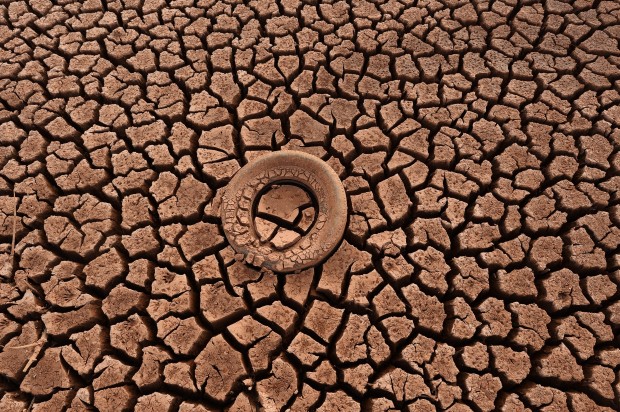To Adapt to Climate Change in Texas, No ‘One Size Fits All’ Solution

EPA/LARRY W. SMITH /LANDOV
A car tire lays exposed in the dried lake bottom at Lake Abillene near Abilene, Texas.
Texas is a state so huge that it experiences several different climate conditions, from the subtropical Eastern half (think swamps and hurricanes) to the semiarid West (desert and snow in the winter). As such, the state must wear a variety of hats as it navigates a changing climate.
A new study from Arizona State University says that because every region has a different climate, every region experiences climate change differently. So in combating climate change, each region must come up with a different strategy.
Matei Georgescu, one of the scientists who worked on the study, says that “local decisions can play a role” in decreasing effects of urban expansion to make conditions more livable. And Texas is no exception.
As cities burst at the seams from surges in population, those cities become pollution hubs that Georgescu says will “result in about one to two degrees Celcius warming” that will spread beyond city limits.
A number of Texas cities – including Austin, El Paso and Houston — already hold climate change mitigation meetings or acknowledge that they need to happen. Austin has a plan to reduce greenhouse gas emissions, for instance, but only recently started to look at how the city will adapt to climate change. Georgescu says “cities are the focal points of adaptation because that’s where the greatest concentration of people are.”

Photo courtesy of Texas Tech University
Katharine Hayhoe says Texans may not agree on the cause of climate change, but they can agree something needs to be done.
Katharine Hayhoe, an atmospheric scientist and professor from Texas Tech University, says those localized meetings are crucial to meet varying regional needs. She says climate change exacerbates conditions already present in any given area in Texas.
“What’s happening in Lubbock is different from Austin, which is different from Houston,” Hayhoe says.
Coastal cities such as Houston should focus on maintaining wetlands, which Hayhoe says “act as a buffer” when rising sea levels bring storm surges. But for an increasingly dry town or city in Central Texas, water preservation and innovations like cool roofs and green roofs come into play.
“These different strategies make a difference,” says Georgescu. “Green roofs, for example, are fully capable of increasing the comfort of inhabitants over Texas.”
Green roofs usually involve rooftop plants and gardens. That could help as the average temperature continues to increase. But even better for Texas cities trying to adapt to climate change? Georgeschu says look to the “cool” roofs. Those are roofs that reflect sun and heat.
A study from Yale University reveals that most Texans now acknowledge the existence of global warming. But less than half of those Texans believe that human actions cause global warming.
“Even though we may disagree on what causes climate change, none of us disagree on the ways that we are vulnerable to a changing climate,” Hayhoe says. “Who in West Texas would disagree that we’re in a semi-arid environment? We all know that.”